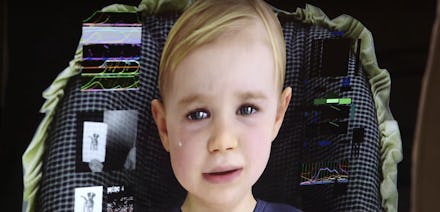Oscar Winner Mark Sagar Is Mapping the Human Consciousness Inside a Computer Baby

Our robot overlords have spoken their first words. They weren't "eliminate humans" or "bow down before my computational wrath." They were "apple," "puppy" and "sheep."
What can we say — they're still so young!
Dr. Mark Sagar, a motion graphics specialist who won two Oscars for his work on movies like King Kong and Avatar, is a world-renowned master of realistically creating human-like bodies in computers. Now, he's tying those bodies to human-like brains.
Sagar is building a baby. Her name is Baby X, and she's part of a series of simulations that attempt to map the human brain so that artificially intelligent machines can react with realistic human expressions.
On the outside, the baby can look out at the world through cameras and microphones to process faces, objects and noises.
Those stimuli are translated into signals in a series of neural nets — Sagar's early attempts at a computational model of human consciousness. Then, those signals are tied to motions in the face to create recognizable responses.
The next step for Dr. Sagar is to start tying Baby X to complicated neural networks and deep learning algorithms so that Baby X can start to learn. Once there is a certain level of complexity and expression, Sagar hopes he'll be able to observe nuanced behaviors you can read right on a simulations face. Behaviors like thought.
"If a computer can express itself to you in a human-like what which is emotional, that's cognitive — that's when you start getting to a sort of interesting place," Sagar told Bloomberg.
Watch Bloomberg's short documentary video about Baby X to hear your new overlord adorably sound out her first words: